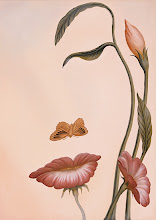The story of the discovery of insulin has been well chronicled beginning with a young physician, Frederick Banting, in London, Ontario, imagining that it might be possible to isolate the internal secretions of the pancreas by ligating the pancreatic ducts to induce atrophy of the acinar cells and thereby minimize contamination of the tissue extract with digestive enzymes. Banting presented his suggestion to J. J. R. Macleod, a distinguished physiologist at the University of Toronto who provided Banting with a laboratory for the summer and some dogs for the experiments. Macleod was initially skeptical, but eventually agreed to let Banting use his lab space while he was on vacation for the summer. He also supplied Banting with ten dogs to experiment on, and two medical students, Best and Clark Noble, to use as lab assistants, before leaving for Scotland. Since Banting only required one lab assistant, Best and Noble flipped a coin to see which would assist Banting for the first half of the summer. Best won the coin toss, and took the first shift as Banting's assistant. Loss of the coin toss may have proved unfortunate for Noble, given that Banting decided to keep Best for the entire summer (and eventually shared half his Nobel Prize money and a large part of the credit for the discovery of insulin with the winner of the toss)
During the summer of 1921, Banting and Best made remarkable progress, and by fall they had isolated material from pancreas extracts that dramatically prolonged the lives of dogs made diabetic by removal of the pancreas. In the winter of 1922, Banting and Best treated their first human patient, a young boy, who's life was saved by the treatment. This was a stunning accomplishment. Consider that from the start of the research in the summer of 1921 to treating a human patient successfully in the winter of 1922, the pace, especially by current standards for clinical treatments, was remarkable.
With that achievement, Macleod, who had been initially unenthusiastic about the work, assigned his entire laboratory to the insulin project. He also enlisted the Eli Lilly Company to aid in the large scale, commercial preparation of insulin although the University of Toronto received the patent for insulin production. By 1923, insulin was available in quantities adequate for relatively widespread treatment of diabetes. Although the success of the insulin project was remarkable, the rewards for the research workers were, it seems, quite controversial. The 1923 Noble Prize in Physiology or Medicine was awarded to Banting and Macleod. Apparently, Banting was annoyed at the omission of Best and gave him half of his share of the prize. There was also, perhaps, the feeling that Macleod had done little in the initial stages of the work and was an undeserving recipient. Macleod split his share of the Prize with J. B. Collip who had made contributions to the later stages of the work on insulin purification.
After the spectacular events of 1921–1923, the University of Toronto established the Banting and Best Department of Medical Research separate from the University. Banting accomplished little during the rest of his career and died in a plane crash in 1940. Best, however, had a long successful tenure at the University of Toronto working on insulin and subsequently other important topics including the importance of dietary choline and the development of heparin as an anticoagulant.
Read more at The Discovery of Insulin: the Work of Frederick Banting and Charles Best Robert D. Simoni, Robert L. Hill and Martha Vaughan /The Journal of Biological Chemistry,


No comments:
Post a Comment